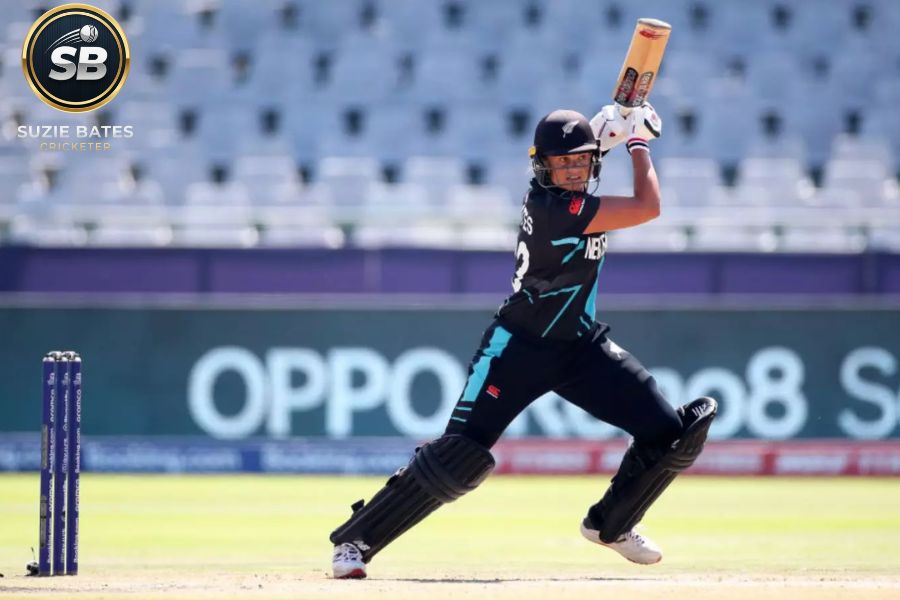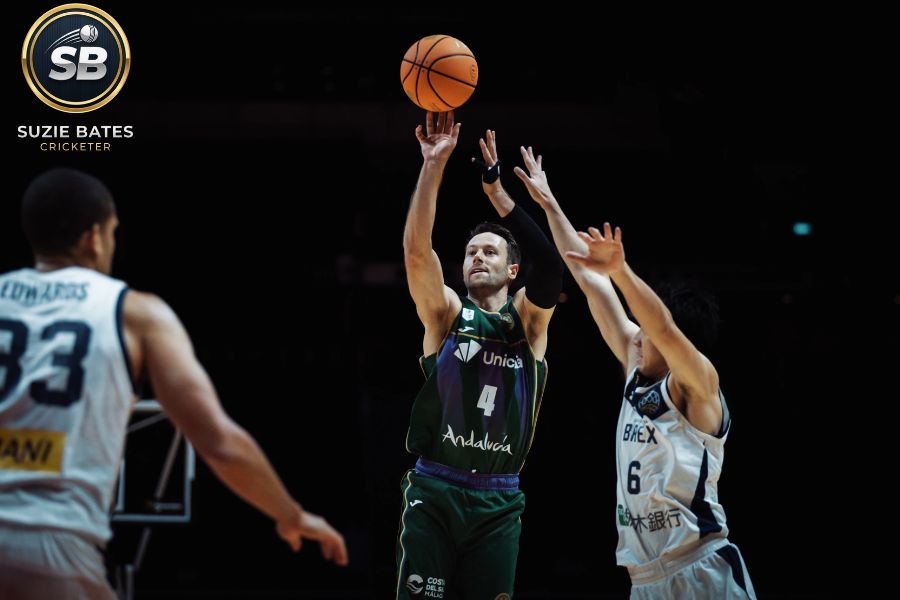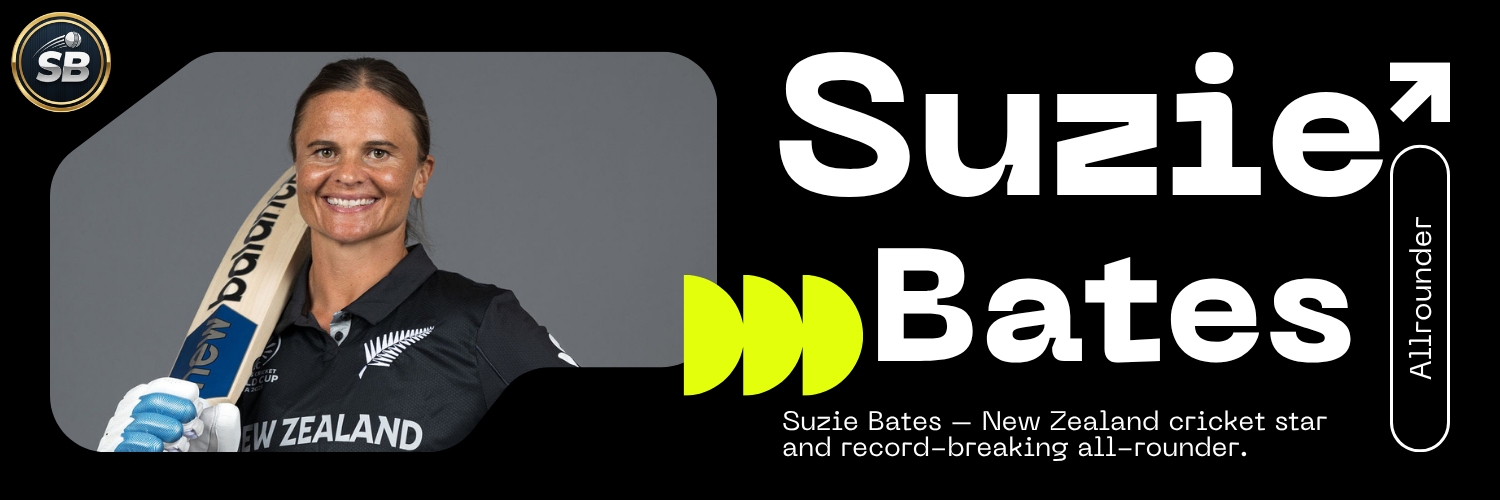Suzie Bates didn’t just play two sports – she mastered them through smart, balanced training. Her mix of basketball agility, cricket precision, and mindful recovery made her one of the fittest and most enduring athletes of her generation. Here’s how she did it.
Early Foundations: Training in Motion
Growing up in Dunedin, Bates was always in movement. There were no off-seasons, only transitions. Summers belonged to cricket, winters to basketball, and the spaces in between to everything else.
Her first “training program” wasn’t drawn up by a strength coach; it was self-made through hours outdoors. Backyard cricket taught her hand-eye coordination, while community basketball sharpened her agility. “We didn’t call it training back then,” she told Sport NZ. “We called it playing.”
That play built the foundation for everything that followed – a base of multidirectional fitness and endurance that gave her one of the most balanced athletic profiles in women’s sport.

The Challenge: Two Sports, Two Physiologies
By the time she reached elite level, Bates realized she wasn’t just training for two sports – she was training for two completely different metabolic systems.
- Basketball demands anaerobic bursts – short sprints, lateral movement, explosive jumps.
- Cricket requires aerobic stamina – long hours in the field, steady-state concentration, and controlled coordination.
“Switching between them was like changing engines,” she explained in a Cricbuzz feature. “Basketball made me powerful. Cricket made me patient. Balancing both meant learning to be explosive without losing endurance.”
Her solution wasn’t to separate the two, but to integrate them – blending agility, recovery, and skill work into one seamless cycle.
Building the Hybrid Body
Suzie’s dual sport training evolved into a kind of personal science experiment. Working with strength coaches from both Otago Sparks (cricket) and Otago Gold Rush (basketball), she developed a periodized routine that balanced high-intensity bursts with low-impact endurance.
A typical dual-season week looked like this:
- Monday: Mobility work, core activation, light cardio
- Tuesday: Court drills and sprints – basketball-specific lateral movement
- Wednesday: Cricket net session (batting and fielding drills), strength training in evening
- Thursday: Recovery yoga and pool session
- Friday: Team basketball scrimmage or fitness test
- Saturday: Cricket match or conditioning block
- Sunday: Full rest – though Bates often squeezed in shooting practice “just for fun.”
Her strength sessions were functional, focusing on movement efficiency rather than bulk. “I never wanted to lose flexibility,” she said. “My goal was to move well, not lift heavy.”
The Mental Conditioning
Physical fitness kept her on the field; mental balance kept her in the game. Bates often says the hardest part of being a dual athlete wasn’t exhaustion – it was identity.
“After a bad cricket match, I’d walk straight into basketball training the next morning,” she told Balance is Better. “You don’t have time to dwell. You reset fast.”
That ability to compartmentalize became her greatest weapon. Each sport served as therapy for the other. Basketball gave her a social, fast-paced outlet; cricket gave her solitude and rhythm. Together, they prevented burnout.
Her pre-match routine also shifted depending on the sport:
- For basketball, she needed energy – loud music, short warm-ups, instant focus.
- For cricket, she needed calm – silence, breathing, visualization.
“Two games, two mindsets,” she said. “You learn emotional agility – how to move between intensity and patience.”
This blend of mindset, routine, and emotional management is a strong reflection of themes often discussed in the Lifestyle & Personal category, where Bates’s off-field balance plays a defining role in her longevity

Cross-Training Benefits: When One Sport Feeds the Other
Every year spent balancing basketball and cricket gave Bates hidden advantages that single-sport athletes rarely develop.
- Hand-eye precision: The coordination from basketball dribbling and passing made her one of cricket’s most reliable fielders.
- Footwork and balance: Defensive stances on court helped her stability when batting and running between wickets.
- Spatial intelligence: Reading plays in basketball refined her field awareness in cricket.
- Endurance: The long sessions in cricket built her cardiovascular base, improving her recovery between basketball possessions.
These complementary skills explain why she remained injury-free for much of her 20-year career. Variety wasn’t just enjoyable – it was her longevity secret.
The Transition Years: Training Smarter, Not Harder
As her cricket career took priority post-2010, Bates adjusted her training philosophy. The dual grind gave way to a more data-driven routine, though her basketball roots still shaped her methods.
She continued incorporating plyometrics, reaction drills, and change-of-direction work, often inspired by basketball conditioning. “It keeps me sharp,” she said in a White Ferns media feature. “When I feel agile, my cricket feels better.”
In the gym, she favored free weights, balance boards, and resistance bands – tools that promoted functional strength. Her fitness coach once described her as “the prototype of sustainable performance – no gimmicks, just good habits repeated forever.”
Nutrition and Recovery
Managing two sports meant learning how to refuel smartly. Bates worked with nutritionists to balance high-energy basketball diets (carb-heavy, quick recovery) with cricket’s endurance-oriented needs (sustained fuel and hydration).
Hydration was non-negotiable – long flights, back-to-back matches, and contrasting climates demanded precision. “Basketball in winter gyms and cricket in summer sun – you get both extremes,” she laughed.
Sleep became her secret weapon. She credits consistent rest – 8 to 9 hours nightly – as the foundation of her dual sport resilience. “When your body’s asked to do two jobs, recovery becomes your real training,” she told Sport NZ.
Injury and Reinvention
Even the fittest body has limits. In 2020, a shoulder injury forced Bates to sit out several international matches. For someone used to constant activity, rest was its own challenge.
Instead of frustration, she treated recovery as another training block. “It reminded me of basketball rehab – small wins, daily patience,” she said in an ESPNcricinfo interview.
She returned stronger, emphasizing mobility, posture, and mindfulness. Her comeback underscored the durability built through years of varied movement – proof that her dual sport background had fortified her against long-term wear.
The Evolution of a Teacher
Now one of New Zealand’s most respected athletes, Bates uses her platform to promote cross-disciplinary training for young players. She often mentors teenage athletes who struggle to choose between sports, urging them to resist early specialization.
Her advice is simple yet profound:
“You don’t have to give up one love for another. Learn from both, and you’ll be better at each.”
She’s collaborated with Balance is Better to advocate for broader youth participation, reminding parents that overtraining in one discipline can stunt both performance and joy. “Movement is movement,” she says. “The body doesn’t care what shape the ball is.”
The Science of Longevity
What sports scientists admire most about Bates’s dual sport journey isn’t just her success – it’s her sustainability. Few athletes maintain elite performance into their mid-thirties across such varied demands.
Experts at High Performance Sport New Zealand have used her data to study adaptability – how cross-sport conditioning can reduce repetitive strain and improve neuro-muscular response.
Her reaction times, measured during a 2021 study, ranked among the best in women’s cricket – a byproduct, researchers believe, of years of hand-eye engagement in basketball.
The Philosophy Behind the Training
At its core, Suzie Bates’s dual sport training philosophy is not about doing more – it’s about doing differently. She refuses to view her career as divided between cricket and basketball; to her, it’s one continuous education.
“You can’t separate the two anymore,” she said in a Wisden interview. “Basketball built my rhythm, cricket built my focus – they’re both part of how I move.”
That synthesis – of power and patience, of creativity and structure – defines her legacy as a dual athlete.

The Legacy of Movement
Today, Bates continues to train like the hybrid she is: blending yoga with sprints, net sessions with court drills, balance work with batting flow. Her training may look different from the generation before her, but it carries the same principle – adaptability is the ultimate skill.
As she enters the twilight of her career, her methods have become a model for how women’s sport can evolve – less about singular mastery, more about holistic excellence.
When asked recently whether she’d ever completely stopped basketball, she smiled:
“Never. I still shoot hoops between tours. It keeps me grounded – and my shoulders ready for another cover drive.”
Suzie Bates’s dual sport training isn’t just a story of fitness; it’s a manifesto for balance – proof that in the art of longevity, variety is the greatest strength of all.


